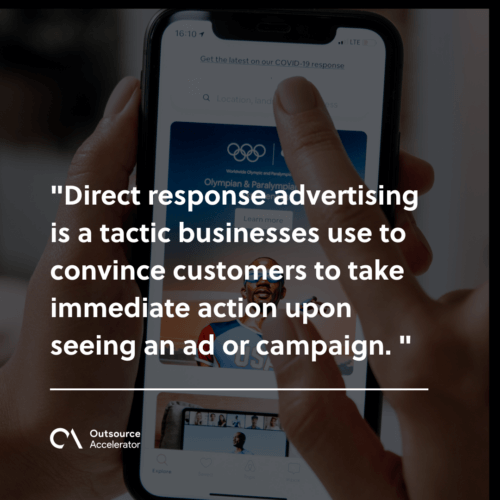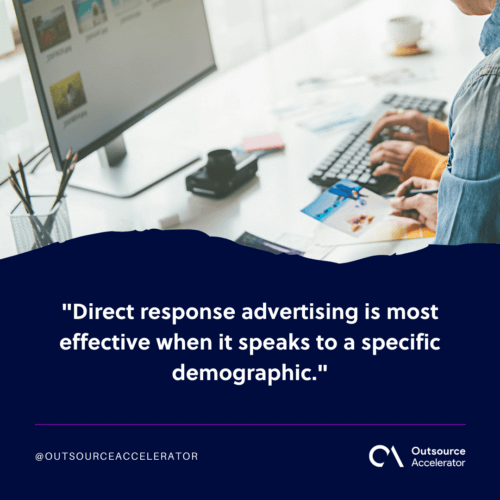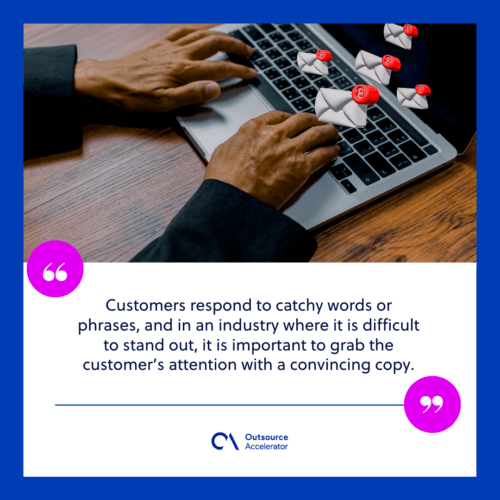Direct response advertising: Definition and benefits

Sometimes, customers would wait a while before buying a product. Other times, they would take action immediately upon seeing a unique advertisement or product listing.
The latter case is an effect of direct response advertising, an effective marketing technique to deliver speedy results.
Continue reading to learn more about this tactic.
What is direct response advertising?
Direct response advertising is a tactic businesses use to convince customers to take immediate action upon seeing an ad or campaign. This marketing tactic aims to generate leads and convert prospects into customers.
The types of immediate responses include buying the product immediately after spotting a good deal, visiting their website, sharing a post, or signing up for a newsletter.

Examples of direct response advertising
Let’s take a look at some successful examples of companies that used direct response advertising.
- Proactiv – Proactiv’s infomercials promoted their products with limited-time deals, including a free product with every purchase.
- New York Times – The New York Times ran a campaign that offered a limited discount on unlimited access to their newspaper.
- Scribd – Similarly, Scribd used social media to promote their limited discount offer on all ebooks and audiobooks.
Key elements of direct response advertising
Direct response advertising has various important elements which you may include in your marketing strategy, such as the following:
Clear call to action
All direct response marketing strategies should include a clear call to action that will entice the customer to take the next step immediately.
For example, it is not enough for a customer to simply watch an ad or scroll past it on social media.
Brands must make it so that their customers are interested enough to actively perform a specific action, like buying the product directly or visiting the website.
Customer centeredness
Effective direct response advertising campaigns answer to the customer’s needs. It is not just about trying to make a quick sale.
They must provide value to the customer and answer their problems, so much so that they respond by buying the product or performing any other call to action.
Urgency
One of the elements of direct response marketing is creating a sense of urgency that prompts the customer to act immediately.
Some examples include using power words, such as “Exclusive” or “Giveaway” and phrases like “Limited time only” or offering large discounts.
Personalization
Direct response advertising is most effective when it speaks to a specific demographic. Brands must take time to personalize each campaign in order to attract the right people.
This is where hyper-personalization and customer segmentation are useful, as they help brands distinguish their customers and cater campaigns to their specific needs.

Benefits of direct response advertising
Direct response advertising is an effective technique and does wonders for businesses. Here are some ways it can benefit yours:
Fast results
Because of the quick action taken by customers, businesses achieve results faster, especially during time-sensitive campaigns.
Because of this, brands can earn more quickly and gain an advantage over their competitors.
Identify leads and prospects.
One of the benefits of direct responses is that it allows sales teams to see who is interested in their brands. It gives them more time to nurture these potential customers instead of focusing on cold leads.
Easy to measure
It is easy to see the correlation between a new direct response advertising campaign and the customer’s actions.
Brands can use this technique to determine whether a certain campaign is effective. It allows them to optimize their marketing strategies since they know which brings in the most customers.
Direct response advertising best practices
Direct response advertising requires a lot of careful planning and the right practices. Here are some to take note of:
Create easy responses
Customers will not take immediate action if it requires a lot of steps or if the process is too complicated.
Keep things simple and easy to understand for the average customer, as doing so will increase customer retention rate and drive results faster.
Compelling copy
Customers respond to catchy words or phrases, and in an industry where it is difficult to stand out, it is important to grab the customer’s attention with a convincing copy.
Your copy should be short and sweet but effective enough to convince customers to take immediate action.

Specific calls to action
Brands must be clear and specific about these next action steps so that customers have a better understanding of what they are getting themselves into.
For example, if you tell your customers to sign up for a newsletter, be specific about certain details, like what is in the newsletter or how often they will receive it.
Following up
Once a customer has taken immediate action, remember to monitor them and see how you can engage them further. The most common way is to send them a follow up email.
It helps to track your customers’ responses and gauge their interest level, and analyze metrics like open rate, conversion rate, and return on investment.







 Independent
Independent




